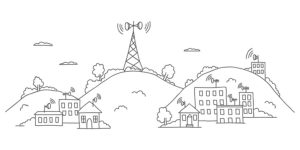The health effects of radiation from 5G are being debated, but one study suggests the connection between RF radiation and cancer in male rats. The study was classified before it was removed at the end of 2012 by Central Intelligence Agency, but it has proven that radiofrequency may cause cancer in animals, including humans. In the research, scientists exposed male rats to radiofrequency for 15 days , and discovered that they developed same types of cancers as humans do.

Health effects of radiation from 5G
The rapid expansion of wireless communication have led to creation of 5G technologies There are increasing concerns about the health impacts of the radiation from 5G. Although the higher frequencies do not penetrate the body as deeply as older technologies, scientists have identified potential systemic impacts and are calling for further studies. To ensure that the population is protected and protected, the European Commission is requesting independent studies to determine whether the technology poses any health hazards.
It is crucial to remember that there's a substantial amount of misunderstanding about 5G's health impacts, and it is vital to dispel any misconceptions that persist. While the technology is not yet widely used, there are many individuals who are being warned that it can cause health issues mostly via social media where sexy language is used.
Beamforming technique
Beamforming is one of the most important technologies for five-G networks. It is a method that makes use of multiple radiating elements to generate narrow beams. The aim of beamforming is to minimize how much unwanted radiation is reflected within the resultant signal. This method is widely employed in wireless communication systems, and is essential for 5G's low-cost coverage.
The method works by electronically weighting the individual signals from each antenna. This results in an extremely smaller beam of radiation which increases cell coverage indoors and near cell edges. This is crucial since poor coverage could result in poor user satisfaction. Along with increasing the signal quality beamforming can help reduce the amount of interference that a user receives from other devices.
Power density
The power density of 5G radiation coming from cell towers will be similar to the previous generation of 4G and 3G systems. One reason behind the low power density lies in the sensitivity of electronic components. The maximum radiation output for a 2G handset was about 2 Watts, while that of the 4G model was around 200 milliwatts.
The power density is the amount of electromagnetic energy that can be absorbed into the body from a particular distance. Its power density in 5g radiation is typically expressed in watts per square meters. In contrast to the SAR measurement power density is a measurement of the quantity of electromagnetic energy within a given space. The parameters for power density are different for wearables and mobile devices depending on their operating frequency and distance.
Specific absorption
The Specific Absorption Ratio (SAR) is a parameter that measures the rate at which a particular frequency depositions power in human tissues. In general, the SAR number must not exceed 2 Watts per kilogram of body mass. The SAR value is calculated from the electric field that exists within tissues and the mass density, which is measured in kilograms per cubic meter. It was recently applied to the proposed antenna design.
The latest radio technology which comprise the 5G network operate at frequencies less than 6 GHz. These frequencies are also known in millimeter waves. However, the FCC's SAR compliance protocol only applies to frequencies of up 6-GHz. Furthermore, the SAR test requires that measurements are conducted using phantoms that contain tissues simulating media.
5g radiation symptoms , we have no information on the health impacts of 5G radiation to the skin. The current knowledge is limited due to the lack of experiments in vivo and theoretic models. However, there is an urgent need to conduct more studies of the effects of 5G radio frequency radiation on human skin. Utilizing 5G radio frequencies may cause skin damage particularly to the epidermis which is one of the most sensitive parts.
Unlike 4G, 5G radiation is one of the highest frequencies that has been found to heat human body tissues. The human body is dipolar, and the higher frequency of radio waves from 5G will cause heat in the skin. The exposure to radio frequencies from 5G could also affect other organs in the body, such as the brain.
